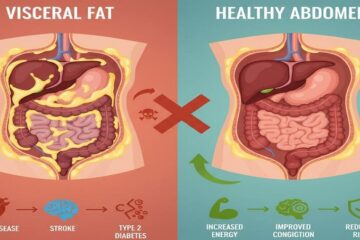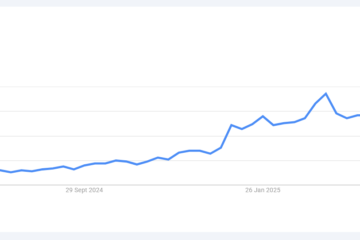Photo: You are in a meeting room of your tech company, and two people have the same conversation about the same design problem. Someone is talking about whether the team has the right skills to deal with it. Second, a deep dive is on whether the solution is actually solved by the user’s problem. The same room, the same problem, absolutely different lenses.
The article continues below
This is the beautiful, sometimes dirty fact of having both design manager and lead designer in the same team. And if you are thinking that this task is asking the right question without confusing, overlap, or the horrific “many chefs” scenario.
The traditional answer is to draw clean lines on the org chart. The design manager handles people, handling lead designer craft. The problem solved, okay? Except there are concepts of clean orange charts. In fact, both roles take deep care about team health, design quality, and shipping tremendous work.
Magic happens when you embrace overlap instead of fighting it – when you start thinking your design organs as a design biology.
Healthy design team’s anatomy#Section 2
What I have learned from the years on both sides of this equation is: Think of your design team as a living organism. The design manager leads to the mind (psychological safety, career growth, team dynamics). The lead designer leads to the body (craft skills, design standards, hand -work that sends users).
But just as the brain and body are not completely separate systems, so does these roles overlap in important ways. You can’t have a healthy person without working in harmony. The trick is knowing where they are overlap and how to visit them beautifully.
When we see how healthy teams actually work, three important systems emerge. Everyone needs both roles to work together, but with accepting the basic responsibility of keeping this system strong.
Nervous system: people and psychology#Section 3
Primary Negators: Design Manager
Supported character: lead designer
The nervous system is about signal, feedback and psychological safety. When this system is healthy, information flows freely, people feel safe to take risk, and the team can rapidly adapt to new challenges.
The design manager is the primary caretaker here. They are overseeing the team’s psychological pulse, making sure that the effects of impression are healthy, and create people’s growing conditions. They are hosting a career conversation, carrying the burden of work, and making sure that no one is burned.
But the lead designer plays an important support role. They are providing sensory inputs about craft development requirements, when one’s design skills are stagnant, and helps identify development opportunities that can lose the design manager.
The design manager’s trend is:
- Carrier conversation and growth plan
- Team psychological safety and dynamics
- Workload management and distribution of resources
- Performance reviews and feedback systems
- Creating learning opportunities
Leads the lead designer:
- Providing craft impression on team members’ development
- To indicate the design skills difference and growth opportunities
- Offer the design and guidance of the design
- Signaling when team members are ready for more complicated challenges
Muscle system: craft and processed#Section 4
Primary Negators: Lead Designer
Supported character: Design Manager
The muscle system is about strength, harmony and expertise development. When this system is healthy, the team can perform complex design work with precision, maintain permanent standards, and adapt its skills to new challenges.
The lead designer is the main caretaker here. They are setting the design standards, providing craft coaching, and ensuring that the shipping work meets the quality bar. They are the people who can tell you whether the design decision is correct or if we are solving the right problem.
But the design manager plays an important support role. They are ensuring that the team has the resources and support to do their best craftsmanship, such as a time of proper nutrition and recovery for a player.
The lead designer’s trend is:
- Definition of design standards and system use
- Feedback about design work meet standards
- Experience direction for product
- Design decisions and wide alignment of products
- Innovation and Craft Advancement
The design supports manager:
- To ensure that the entire team is understood and adopted.
- The direction of the experiment is being confirmed
- To support the methods and systems that on a scale without interruption
- To provide aid alignment in teams
- Removing the obstacles to the resources supply and the work of large crafts
Circulating system: strategy and flow#Section 5
Commonwealth: both design manager and lead designer
The circulation system is about how information, decisions and energy flow through the team. When this system is healthy, the strategic direction is clear, priorities are attached, and the team can respond immediately to new opportunities or challenges.
This is the place where the real partnership is. Both characters are responsible for keeping the rotation strong, but they are bringing different perspectives to the table.
Lead designer collaborates:
- User requirements are met by product
- Overall product quality and experience
- Strategic design steps
- Research -based user needs every move
The design manager cooperates:
- Talk to team and stakeholders
- Stakeholder management and alignment
- Cross Functional Team Accountability
- Strategic business initiatives
Both cooperate:
- Creating strategies with leadership
- Team’s goals and preferred points
- Organizational structure decisions
- Success measures and framework
Keeping the organism healthy#Section 6
The key to singing this partnership is to understand that all three systems need to work together. A team that has tremendous craftsmanship but psychological safety is poor. A team that implemented great culture but weak crafts will send a slight task. Both but the poor strategic rotation team will work hard on the wrong things.
Be clear about what system you are developing#Section 7
When you are at a meeting about a design problem, it helps to recognize which system you mainly focus on. “I am thinking about this from the team’s ability to point out” (nervous system) or “I’m looking at it through the lens of user needs” (muscle system) provides each one for your input context.
It’s not about living in your lane. It’s about being transparent, which lenses you are using, so the other person knows how to get their point of view better.
Make a healthy feedback loop#Section 8
I have seen the most successful partnerships setting a loop of clear opinion among the system:
Nervous system muscle system indicators: “The team is struggling with confidence in their design skills” → lead designer provides more craft coaching and clear quality.
Signal of the nervous system muscle system: “The team’s craft skills are moving faster than the complexity of their project,” the design manager gets more difficult opportunities for development.
Both system indicates circulation system: “We’re looking at the team’s health and craft development samples that suggest that we need to adjust our strategic priorities.”
Handle the hands office beautifully#Section 9
The most important moments in this partnership are when some move from one system to another. This can happen when a design standard (muscle system) needs to be added to the entire team (nervous system), or when a strategic move (rotation system) requires specific craft implementation (muscle system).
Explain these transitions. “I have explained the new standards of the ingredient. Can you help me think about reaching the team at a speedy?” Or “We have agreed on this strategic direction. I’m going to focus on the user’s specific experience approach here.”
Be in curiosity, not regional#Section 10
The design manager who never thinks about a craft, or lead designer who never understands the dynamics of the team, is like a doctor who only sees a physical system. The great design requires both people to care about the entire biology, even when they are not the basic caretakers.
This means ask questions instead of assumptions. “What do you think about the team’s craft development in this area?” Or “How do you see the burden of the morale and work of this impressive team?” Both of them are active in every decision.
When organisms get sick#Section 11
Even despite the clear role, this partnership can go like this. I have seen the most common failure ways are:
System isolation#Section 12
The design manager is focused only on the nervous system and ignores craft development. The lead designer is focused only on the muscle system and ignores the team’s dynamics. Both people withdrew their relief areas and quit cooperation.
Symptoms: Team members face mixed messages, quality of work, get drops of morale.
Treatment: Contact the joint results again. What are you trying to get? Usually this is the excellent design of the design that goes on a healthy team on time. Find out how both systems fulfill this goal.
Poor circulation#Section 13
The strategic direction is not clear, the priorities change, nor is any role accepting the responsibility of continuing the information.
Symptoms: Team members are confused about the priorities, the work is duplicated or dropped, the deadline is missed.
Treatment: Explain the responsibility of circulation. Who is talking to? How many times? What is the opinion loop?
Autoimmune response#Section 14
One person feels threatened by the skill of another. The design manager believes that the lead designer is damaging his option. The lead designer believes that the design manager does not understand the craft.
Symptoms: Defense behavior, regional disputes, members of the team were caught in the middle.
Treatment: Remember that both of you are the caretakers of the same organism. When a system fails, the whole team is facing. When both systems are healthy, the team flourishes.
Yes, this model requires more communication. Yes, both of them need to be safe enough to share the health responsibility of the team. But the payment is worth it: better decisions, strong teams, and design work that is both excellent and sustainable.
When both characters work healthy and together, you find the best in both worlds: deep craftsmanship skills and lead to strong people. When one person gets sick, on vacation, or overwhelmed, the other can help maintain the team’s health. When a decision requires both people’s point of view and craftsmanship, you both get into the room.
Most importantly, framework scales. As your team is growing, you can apply the thinking of the same system to new challenges. Need to launch a design system? Lead designer leads to muscle systems (standards and implementation), the design manager leads to the nervous system (adoption and transformation management), and both are inclined towards rotation (communication and stakeholder alignment).
The design manager and the lead designer are not about to divide the relationship areas. This is about multiplication effect. When both characters believe that they are attracted to different aspects of the same healthy biology, it is magic.
The brain and body work together. The team needs both strategic thinking and craft Excellence that they need. And most importantly, the work that sends it to consumers benefits from both views.
So the next time you are in this meeting room, you are wondering why two people are talking about the same problem from different angles, remember: You are practically watching the joint leadership. And if it is working well, your design team’s brain and body are becoming stronger.



0 Comments